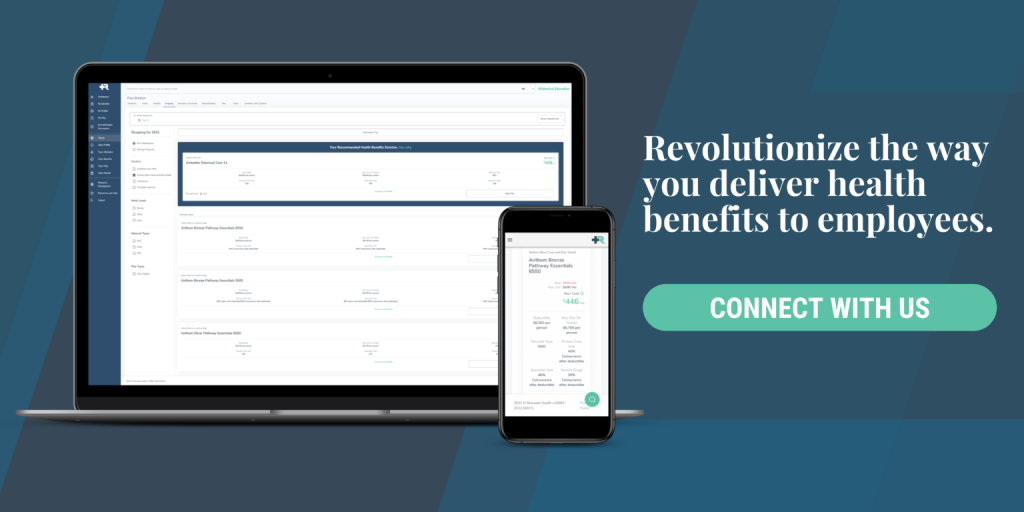It’s almost that time of year again. The pressure is on for admins to make the perfect insurance choice that keeps everyone’s doctors and doesn’t increase deductibles, while somehow paying less than last year. Is that even possible or is it all just a dream? To help you make the best decision for your organization, we wanted to put you in the right direction by using real data to dispell the top group health myths we hear all the time!
5. Myth: Your people actually like group coverage
When was the last time you asked your people if they like their plan? I don’t mean asking them quickly while grabbing a cup of coffee in the office kitchen, I mean when was the last time you did an anonymous survey to find out exactly how they’re feeling about their benefits? Don’t you think this is a valuable thing to do? Did you know it can be incompliant if you don’t ask correctly? Even if you figured out a way to compliantly survey your people, what you would find is that they are likely just “fine” with their health insurance.
You’re probably thinking, “But I saw that article that said people are actually happy with their health insurance how it is and they don’t want it to change!” When you consider that most people are very afraid of losing their health insurance, that context reveals this is more about fear of having nothing (or having it be too expensive) than preferring a specific plan.
Ask yourself this question: if your people were fully educated on all their innovative options, do you think they would still be happy with the plan you picked for them? Herein lies the biggest issue many admins have with this huge benefits decision: you really want to pick something that meets everyone ‘s needs, but everyone is different. Am I right?
4. Myth: Your people actually use their group coverage
Many admins agree that health insurance is one of the most painful organizational changes they’ve ever made. What many don’t know is that according to the averages, only 8% of employees are actually using it. If I give you an expensive watch for Christmas, yet you don’t ever wear it, is that money well spent? Of course not!
There are millions of dollars every year that are being wasted on bloated group premiums when the products themselves are nothing more than the reminder that someone spent way too much money on them. With this said, yes, some people do use insurance a lot. But why not personalize your approach to caring for your people so that everyone is treated equitably, getting them everything they need and actually use. You may be sitting on resources you never knew existed!
3. Myth: You’re stuck until your renewal
If I had a dollar for every time someone said they were stuck in a health insurance contract until their renewal, I’d have enough money to pay my deductible! Have you looked at the actual terms of your old school group plan? For most standard fully-insured plans, you can leave that plan at any time. The exception would be for self-funded plans that have a run-out timeframe. But for most groups, you can change at any time during the year.
Obviously, the ability to switch insurance plans at any time and the wisdom of actually doing so are two different things. You will want to sit down with a consultant to evaluate the pros and cons of any potential plans. For example, if you know you have several people on your team deep into their deductibles, it might be better to just wait. But if you change to an innovative benefits strategy, you may save enough as a company to even out with those people already in their deductibles. So don’t count out a switch too quickly without doing a thorough analysis!

2. Myth: You lose doctors if you change networks
Another group health myth we discussed in another blog is that you “lose” your doctor if you switch networks. Many people go to an out-of-network doctor every year as self-pay patients and simply get billed by the doctor directly. This method is used regularly by many sharing ministries and the millions of people who are still going uninsured in the United States.
Recently, my wife wanted to go to a doctor that she had “lost” when her network changed. When they asked her how she was going to pay, she just told them she would self-pay. Do you know what they did? They automatically discounted her bill by half! Why? Likely because they didn’t want to get into negotiations later on and waste time. (You can negotiate deep discounts on bigger bills if you settle with cash!) So not only do you not lose your doctor, you can sometimes get a better price all-around by simply being a shrewd consumer!
1. Myth: Buying group plans provides the best discounts
When you purchase a group plan, you are buying against the group aggregate. You are not just buying a number of plans. If all plans were the same, buying in bulk would always make the most economic sense, right? If only that was the case for health insurance. Unfortunately, the older any of your employees get, the more likely they are to actually use their insurance. And insurance companies don’t make money on you using their products, they make money on you not using it.
So, costs end up increasing not just for that older individual but for the entire team, and not equitably either. Almost always, when you look at a good-sized group, you will see that when you move everyone to individualized plans, the aggregate cost goes down. Even though some people’s individual prices increased, most of the rest decreased! And don’t worry, there are compliant ways to take care of those higher-cost people by not increasing their costs and still decreasing yours. This method is used to enhance benefits plans and products.
Don’t give in to the group health myth that buying in bulk is always cheaper!

